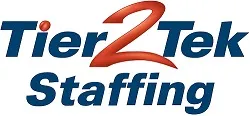Product Manager Interview Questions with Answers

Breaking into product management or leveling up in the role often involves a rigorous interview process. While soft skills like communication and leadership are essential, technical competence can set you apart. Hiring managers want to see that you can work with engineers, understand data, and make product decisions rooted in technology and business logic. Below are 15 technical interview questions with short, sharp answers to help you prep fast and confidently.
- What is an API, and why is it important in product development?
An API (Application Programming Interface) allows different systems or services to communicate. It’s important because it lets products integrate seamlessly with other tools and platforms. - How do you prioritize features in a product roadmap?
Use frameworks like RICE (Reach, Impact, Confidence, Effort) or MoSCoW (Must have, Should have, Could have, Won’t have) to align features with business goals and resource constraints. - What’s the difference between Agile and Waterfall development?
Agile is iterative and flexible, ideal for evolving products. Waterfall is linear and structured, better for fixed-scope projects. - What is a user story?
A user story describes a feature from the end user’s perspective: “As a [user], I want [goal], so that [reason].” - How do you define success for a product?
Define KPIs like user retention, revenue growth, NPS, or feature adoption—success varies by product and stage. - What’s the role of a product manager in a sprint planning meeting?
The PM clarifies priorities, defines user stories, answers scope questions, and ensures alignment with business goals. - Explain the concept of a Minimum Viable Product (MVP).
An MVP is the simplest version of a product that delivers core value, built quickly to test assumptions and gather feedback. - What are wireframes, and why are they important?
Wireframes are basic visual layouts of a page or screen. They help define structure and user flow early in the design process. - How would you analyze a drop in user engagement?
Check analytics for changes in behavior, segment users, review recent releases, and collect qualitative feedback. - What’s a common method for A/B testing?
Split users into two groups: Group A sees the current version; Group B sees a variation. Measure a specific metric to determine which performs better. - How do you handle technical debt?
Balance it with feature development by allocating sprint time for refactoring and working with engineering to prioritize. - How do you ensure product quality before launch?
Conduct thorough QA testing, beta tests, code reviews, and gather stakeholder feedback. - What is a product backlog?
A prioritized list of tasks, features, and bugs that need to be worked on in future sprints. - How do you work with UX/UI designers?
Collaborate closely to define user flows, provide product requirements, and iterate on prototypes based on user feedback. - What metrics would you use to evaluate a new feature?
Adoption rate, usage frequency, retention impact, user feedback, and conversion metrics relevant to the feature’s goal.
🔍 Key Acronyms Every Product Manager Should Know
Being fluent in product-related acronyms helps you communicate clearly with cross-functional teams and shows that you understand core concepts. Here are some of the most common ones:
CTR – Click-Through Rate: The ratio of users who click on a specific link to the number who view it.
API – Application Programming Interface: A set of rules allowing different software to communicate.
MVP – Minimum Viable Product: The simplest version of a product used to test assumptions quickly.
KPI – Key Performance Indicator: A measurable value that shows how effectively a product is meeting business objectives.
OKR – Objectives and Key Results: A framework for setting and tracking goals and measurable outcomes.
UX – User Experience: How a user feels when interacting with a product.
UI – User Interface: The visual and interactive part of a product.
NPS – Net Promoter Score: A measure of customer satisfaction and loyalty.
SQL – Structured Query Language: Used to manage and query relational databases.
A/B Testing – Split Testing: A method of comparing two versions of a product to see which performs better.
PRD – Product Requirements Document: Outlines product features, functionality, and technical requirements.
RICE – Reach, Impact, Confidence, Effort: A prioritization framework for feature planning.
MoSCoW – Must have, Should have, Could have, Won’t have: Another prioritization framework.
SLA – Service Level Agreement: A commitment between service providers and clients outlining expected performance.
DAU/WAU/MAU – Daily/Weekly/Monthly Active Users: Metrics to measure product engagement over time.
